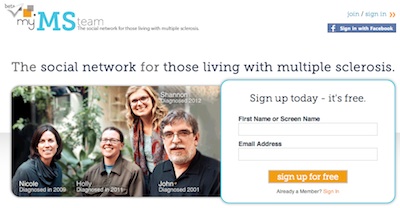 Recent data from the Pew Internet and American Life project found that 8 in 10 online health inquiries start at a search engine like Google, a number that hasn't changed since 2000. But medical information from a search engine is often incomplete or untrustworthy, and isn't always enough information to answer specific questions. At the Health 2.0 event in Santa Clara, California this week, several creators of online patient communities talked about their approaches to connecting patients with health information online.
Recent data from the Pew Internet and American Life project found that 8 in 10 online health inquiries start at a search engine like Google, a number that hasn't changed since 2000. But medical information from a search engine is often incomplete or untrustworthy, and isn't always enough information to answer specific questions. At the Health 2.0 event in Santa Clara, California this week, several creators of online patient communities talked about their approaches to connecting patients with health information online.
"When people get sick with a chronic condition, they go to the internet. The first thing they do is get overwhelmed with everything they see there," said Tal Givoly, CEO and Cofounder of Medivizor.
Medivizor is a platform that presents patients with an easily readable summary of the latest medical literature pertaining to their condition and treatment options. The user's very first engagement with the site is to answer a short survey about their disease, including their specific diagnosis, symptoms, and the treatments their doctor is considering. The site delivers summaries, written at a 10th grade level, of the latest articles about the treatment and condition as well as a primer and a list of open clinical trials. A social aspect comes in because other Medivizor users who have been shown an article can comment on it and have discussions with one another.
Another company, MyHealthTeams, has a question and answer platform on its site, another way to help patients find medical information online. CEO Eric Peacock said the site has "Facebook level" engagement, with monthly active users north of 50 percent. Its question and answer module, wherein patients on the site both ask and answer, has a 99 percent answer rate, he said.
Peacock spoke specifically about the company's MyMSTeam website, one of three disease-specific sites the company operates. MyMSTeam is a social network for people living with multiple sclerosis. He said the company's strategy is to provide a space and tools for members of the community to support each other.
"We're really just hosting the party," he said. "Our job is to make it easy for you to connect with others."
The site lets users find social connections by searching by disease specifics, symptoms, and treatments as well as age range and location. He said people share a lot of information about their disease because they know it's only being seen by a closed community. They can give help and support on their networks and share updates, stories, and links.
Patients can also list their care team, which serves a similar purpose to a physician rating platform. Unlike an anonymous rating system, endorsements tied to profiles allow users to ask follow up questions about a doctor.
A company that takes an opposite approach to many of the same features as MyHealthTeam is HealthTap, whose head of product Sean Mehra was in attendance at the Health 2.0 event. HealthTap doesn't break patients down into disease groups, but its platform also doesn't rely on patients interacting with one another. Instead, HealthTap focuses on promoting patient interaction with a community of doctors.
HealthTap's flagship product is a Q&A platform where physicians respond with short answers to patient health questions and rate each other's answers.
"When you go online, the two main problems are that the info is either not trustworthy or not personalized," Mehra said. With HealthTap, doctors are "not only spitting out the facts, but their answers are tailored to the question itself, very compassionate, and doctors are peer reviewing each other's answers."
The doctors aren't compensated for their answers, but Mehra said they overwhelmingly say they do it mainly because it's fun, and a relatively easy way to help someone. He also said the format for the answers makes them too short to get into prescription, advice, or any other contentious territory.
One more speaker at the Health 2.0 session, PatientsLikeMe Marketing Partner Brad Gescheider, spoke not about how his company provides answers to patients, but how it uses its patient community to create answers for researchers. The company's Open Research Exchange is geared to create a library of free-to-use patient reported outcome measures for a variety of conditions.




















